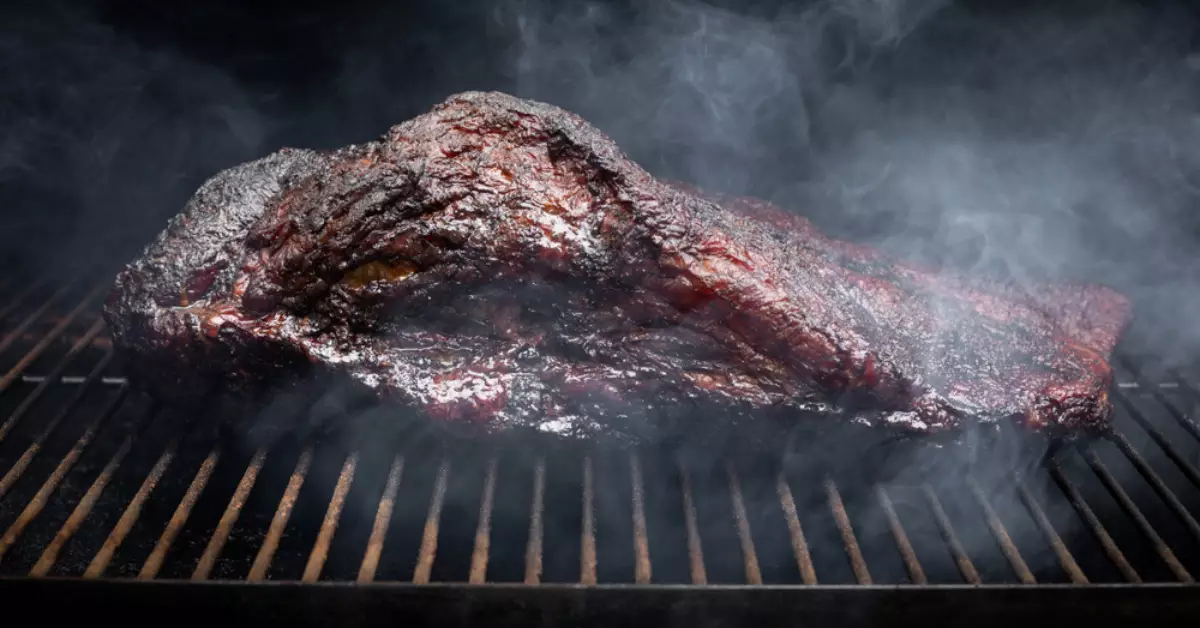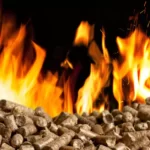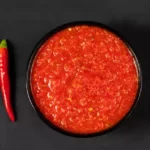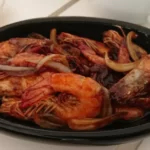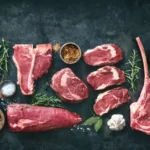Brisket, a cut of meat from the breast or lower chest of beef or veal, holds a central place in many culinary traditions. Known for its rich, complex flavor and succulent tenderness when cooked properly, this cut is the star of the show in dishes like Texas barbecue, Jewish pot roasts, and Vietnamese pho. Despite its popularity, brisket remains one of the most challenging meats to cook due to its size and the tough connective tissues running through it.
The cornerstone of brisket cooking lies in its correct preparation. One intriguing, albeit controversial, technique that has sparked much discussion among culinary enthusiasts is the concept of partially cooking the brisket and finishing it later. It’s an idea that seems convenient, especially when dealing with a large cut, but does it compromise the integrity of the meat or pose any health risks? The answer is both complex and surprising.
While the notion of partially cooking a brisket may raise some eyebrows, science comes to our aid, offering valuable insights into how the process of cooking a brisket unfolds, and the changes the meat undergoes in response to heat. But, to understand it better, let’s first explore the controversy around partial cooking and the science behind brisket cooking.
The Controversy: Partial Cooking of Brisket
The Concept of Partial Cooking
Partial cooking, as the term suggests, involves cooking a piece of meat partially, then allowing it to cool before finishing the cooking process at a later time. It’s a method often employed in professional kitchens where large volumes of food need to be prepared ahead of time.
Why It’s a Subject of Debate
The controversy arises due to potential food safety issues. Bacteria thrive at certain temperatures, and if partially cooked food is not handled correctly, it could become a breeding ground for harmful bacteria, leading to foodborne illnesses. However, this risk can be mitigated with proper food handling practices, which we will discuss later in this article.
Science Behind Cooking a Brisket
Role of Heat in Brisket Cooking
In brisket cooking, heat plays a crucial role in breaking down the tough connective tissues into gelatin, resulting in a tender, juicy piece of meat. This transformation, however, requires sustained, low-heat cooking over several hours.
Understanding the Maillard Reaction
Furthermore, heat facilitates the Maillard reaction – a chemical process responsible for the desirable brown crust and complex flavors in cooked meats. In the case of brisket, this reaction enhances its signature robust flavor profile.
Can You Partially Cook a Brisket?
When it comes to the world of brisket cooking, there is an array of techniques and methods that chefs, home cooks, and barbecue enthusiasts employ to achieve the perfect, melt-in-your-mouth result. A question that frequently pops up in culinary circles and online forums is whether you can partially cook a brisket and finish it later. Let’s dissect this concept further.
Breaking Down the Process
Partially cooking a brisket involves a two-stage cooking process. The first stage involves slow cooking the brisket until it reaches a certain internal temperature, often around 150°F (65°C). The meat is then removed from the heat source and allowed to cool before being refrigerated. In the second stage, the cooking process is resumed, and the brisket is cooked until it reaches the desired final internal temperature, typically around 203°F (95°C).
This method breaks down the long, often tedious, cooking process into manageable stages. It can be especially useful when cooking larger cuts of brisket, as it allows for better control of cooking times and heat management. For instance, if you’re planning to barbecue a brisket but are unsure of maintaining the low and consistent temperature needed for several hours, you could partially cook it in the oven first and then finish it on the barbecue.
Possible Benefits and Risks
There are several advantages to this method. Primarily, it’s a time-saver. By breaking down the process, you can manage your time better, especially when preparing for a large gathering or event. It also provides better heat control, especially when you transition from an oven (which provides steady, reliable heat) to a grill or smoker, where maintaining a consistent temperature can be challenging.
However, this approach doesn’t come without risks. The main concern revolves around food safety. Partially cooked meat can be a potential breeding ground for bacteria, especially if it’s not cooled or stored correctly. This can lead to foodborne illnesses. Therefore, it’s crucial to adhere strictly to safe cooking and handling practices when opting for this method.
How to Partially Cook a Brisket Safely
Despite the potential risks associated with partially cooking a brisket, they can be mitigated by following proper food handling and storage practices. Here are some essential guidelines to follow:
Pre-cooking Preparations
Before you begin, ensure your cooking space is clean and hygienic to minimize the risk of cross-contamination. Preheat your oven, grill, or smoker to a low temperature, preferably around 225°F (107°C). Meanwhile, bring your brisket to room temperature. This is important as it helps the brisket to cook more evenly.
Monitoring Temperature for Safety
Throughout the cooking process, keep a close eye on the internal temperature of the brisket. You can use a meat thermometer for this purpose. As soon as the temperature reaches around 150°F, you should remove the brisket from the heat source. This ensures that the meat is sufficiently cooked to prevent bacteria growth, yet not fully cooked to maintain tenderness.
Proper Storage for Partially Cooked Brisket
After you’ve removed the brisket from the heat, it’s crucial to cool it properly. You can let it sit at room temperature, but not for more than two hours. Any longer, and you risk creating an environment conducive for bacteria growth. Once cooled, wrap the brisket securely in aluminum foil or airtight plastic wrap and place it in the refrigerator.
Finishing a Partially Cooked Brisket
When you’re ready to complete the cooking process, there are certain things to keep in mind to ensure your brisket turns out tender and flavorful.
When and How to Resume Cooking
Before you start cooking the brisket again, take it out of the refrigerator and let it come to room temperature. This helps the meat cook more evenly. Then, preheat your oven, grill, or smoker and place the brisket back on the heat.
Ensuring Full and Even Cooking
As you finish cooking, ensure the heat is evenly distributed across the brisket. This is particularly important if you’re using a grill or smoker, as these can often have hot spots. You may need to rotate or flip the brisket occasionally to ensure it cooks evenly.
Remember, the goal is to bring the brisket up to the final desired internal temperature, usually around 203°F. This is the temperature at which the tough collagen fibers in the brisket have fully broken down, resulting in a tender, melt-in-your-mouth texture.
Do’s and Don’ts of Partial Brisket Cooking
When partially cooking a brisket, there are some important do’s and don’ts to keep in mind.
Tips for Successful Partial Cooking
- Use a meat thermometer: This tool is invaluable when cooking meat, especially a large cut like a brisket. It gives you accurate temperature readings, ensuring your meat is cooked to the correct degree for both taste and safety.
- Cool the brisket correctly before refrigerating: As mentioned earlier, it’s essential to let your partially cooked brisket cool properly before refrigerating it. Leaving it to cool at room temperature for two hours is typically sufficient.
- Maintain proper hygiene: Clean your workspace, wash your hands frequently, and ensure any tools or equipment you use are clean. This can help prevent cross-contamination and the spread of bacteria.
Common Mistakes to Avoid
- Leaving the brisket at room temperature for too long: Bacteria grow rapidly at room temperature, so leaving your partially cooked brisket out for too long can be hazardous. Remember the two-hour rule.
- Finishing the cooking process in a microwave: Microwaves heat food unevenly, which can result in parts of the brisket being overcooked or undercooked. It’s best to finish the cooking process in an oven, on a grill, or in a smoker.
How Partial Cooking Affects the Taste and Texture of Brisket
Impact on Flavor Profile
Partial cooking doesn’t significantly affect the flavor profile of brisket if properly executed. The crucial Maillard reaction occurs both in the initial and final phases of cooking.
Impact on Meat Tenderization
The tenderization of the meat also remains unchanged, as the process of collagen breaking down into gelatin occurs at both stages of cooking.
Frequently Asked Questions
Can I partially cook a brisket one day and finish it the next day?
Yes, you can. This method can be especially beneficial when dealing with larger cuts of brisket. However, it’s crucial to ensure proper cooling and refrigeration of the partially cooked brisket to prevent bacteria growth.
Does partially cooking a brisket make it tougher?
No, partially cooking a brisket won’t make it tougher if done correctly. The key to tender brisket is slow cooking over low heat, which can be achieved in both the initial and final stages of cooking.
What is the safe internal temperature for a partially cooked brisket?
The safe internal temperature for a partially cooked brisket is around 150°F. This temperature ensures the meat is out of the danger zone for bacterial growth but not cooked to the point of being tender.
Conclusion
The concept of partially cooking a brisket, though debated, is scientifically sound and practically feasible. As long as you adhere to safe cooking practices, this method offers a convenient solution for managing large cuts and cooking times.
The key is always to monitor the temperature closely, cool the meat correctly before refrigerating, and ensure even heat distribution when finishing the cooking process. If executed well, you can expect a succulent, tender, and flavorful brisket – even if it’s cooked in two stages.
Ultimately, the decision to partially cook a brisket rests on individual preferences, cooking conditions, and the necessity for convenience. Whether you choose to cook your brisket in one go or split the process, remember that good food is not just about the destination but also the journey – the care, attention, and love you put into preparing the meal.

